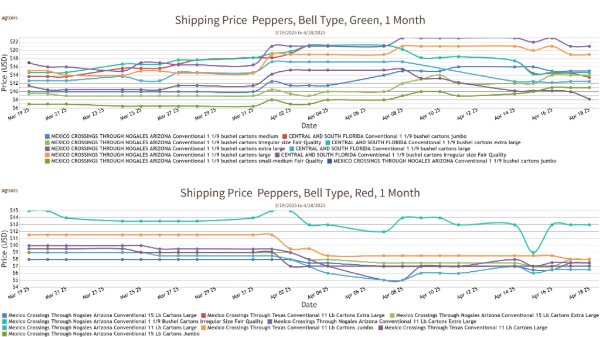Welcome to Blue Book!
Are you ready to join the thousands of companies who rely on Blue Book to drive smarter decisions? View our plans and get started today!
Still have questions? We’d love to show you what Blue Book can do for you. Drop us a line– we’ve been waiting for you.
Throughout 2015, this department will focus on four supply chain efficiency drivers: inventory management, logistics, facilities, and information technology. Chief among these drivers is the effective control of inventory which determines marketplace accessibility to high-quality fresh produce. Inventory must be available at the right time, in the right location, and in the right condition to satisfy customer demand.
This desired outcome is very clear, though the route to success is not always obvious. You have to understand inventory management principles, adapt general inventory strategies to the vagaries of fresh produce, and leverage technology for greater inventory visibility and control. These success drivers are examined below with the assistance of four produce industry experts.
Inventory Principles
In the ideal world, inventory management would be unnecessary: goods would be produced on demand to meet customer specifications and deadlines. For the fresh produce industry, this is an unrealistic proposition. Downstream customers can change orders, consumer demand can be unpredictable, and supply disruptions can occur. Each of these factors makes it necessary to pre-position inventory in anticipation of demand. Thus, companies must follow a logical set of inventory concepts and policies.
Conceptually, the goal of inventory management is straightforward. Supply chain participants seek to maintain the lowest inventory levels possible while meeting customer service requirements. It sounds simple but the devil is in the details of inventory planning and execution. Companies must perform a delicate balancing act to avoid over- or understocking inventory; this requires precise demand forecasting, targeted deployment, and timely replenishment.
Supply and demand matching is particularly challenging in the fresh produce industry, including the retail level. “The supply-demand challenge is about educating your team—how to keep your floor full, your product fresh, and your backroom inventory low to avoid shrink,” comments Dan Kamberaj, produce director for Dash’s Market, a small grocery chain based in upstate New York near Buffalo. “It’s a balancing act that requires a combination of experience, gut feeling, and managing by the numbers.”
Inventory provides a number of valuable functions. In addition to providing supply-demand balancing benefits, economies of scale can be achieved through organizational specialization. Large-scale farming of specific commodity groups helps growers gain expertise, reduce operating costs, and leverage the climatological conditions of the geographic area. Importantly, inventory also provides a buffer against demand spikes, delivery delays, weather-related problems, and other uncertainties.
Inventory Types and Policies
Managers must also understand and control different types of inventory. Cycle stock is the inventory available to satisfy expected demand during a given time period, while safety stock is inventory held to buffer against emergencies and uncertainties, as this reserve is held in case a problem arises. Excess stock is the unnecessary inventory that results from poor management, over delivery, or erroneous forecasts.








